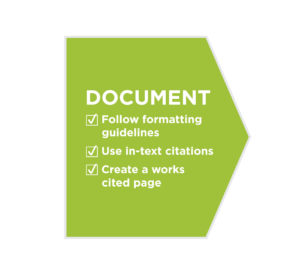23.2: Outcome: MLA Documentation
- Page ID
- 257044
Evaluate MLA document formatting and practices

If you drive a car in America, you (and most every preschooler in the nation) know that green means “go” and red means “stop.” Why is that? Could a city suddenly decide to switch up the colors—blue means “go” and orange means “stop”? The answer is “no,” because changing the colors would cause mass confusion and pose a serious risk to drivers and pedestrians. In order to prevent such mishaps, there is a standardized protocol for traffic signals and lights. The U.S. Department of Transportation Federal Highway Administration publishes the Manual on Uniform Traffic Control Devices to ensure that traffic rules are consistent and uniform across the nation.
Similarly, the Modern Language Association (MLA) is a professional organization for language and literature experts that publishes a handbook to standardize the process for writing academic papers. The handbook explains how to format papers and specifically explains procedures for appropriately citing sources so that other people can easily navigate the research trail. If you follow the MLA guidelines, your paper will not only look nice, but it will include proper in-text citations and a works cited page that appropriately give credit to the authors who inspired your work.
What You Will Learn to Do
- evaluate reasons for the use of MLA formatting and documentation
- evaluate MLA document formatting, including page layout
- evaluate the components of MLA Works Cited citations
- evaluate the components of MLA in-text citations

- Documenting sources checklist. Authored by: Kim Louie for Lumen Learning. License: CC BY: Attribution
- Outcome: MLA Documentation. Provided by: Lumen Learning. License: CC BY-SA: Attribution-ShareAlike
- Information on traffic lights. Provided by: Wikipedia. Located at: https://en.wikipedia.org/wiki/Traffic_light. License: CC BY-SA: Attribution-ShareAlike
- Traffic light picture. Authored by: Wikimedia Images. Provided by: Pixabay. Located at: https://pixabay.com/en/traffic-light-signal-traffic-street-876050/. License: Public Domain: No Known Copyright

